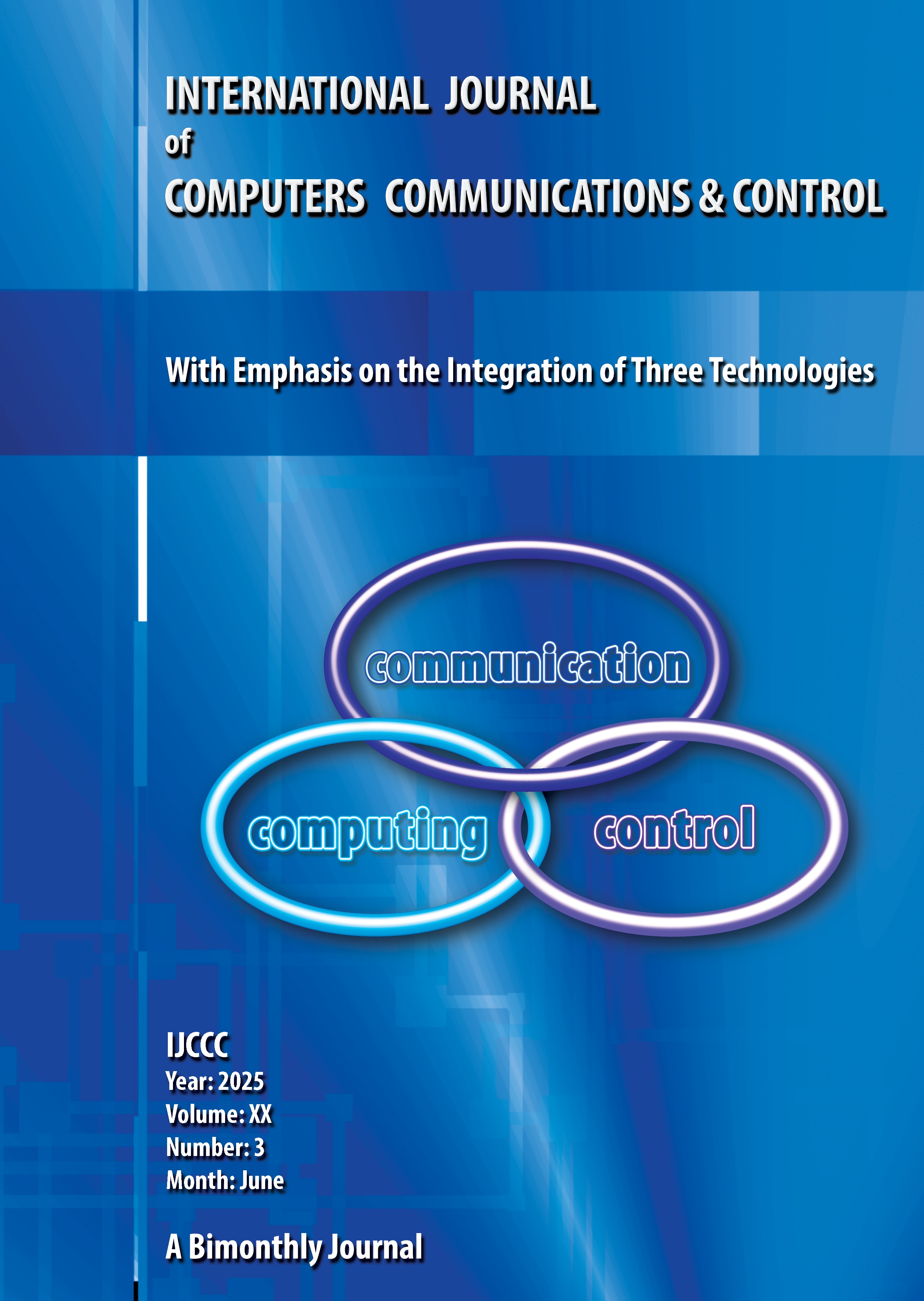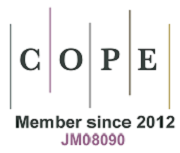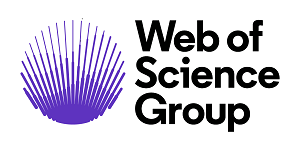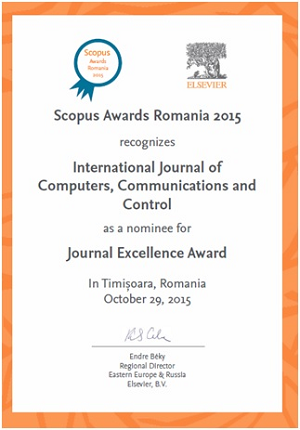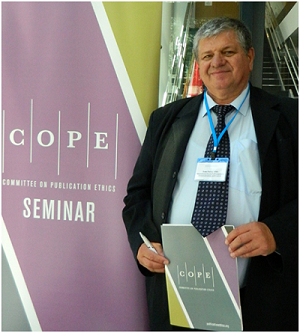A Multi-Hop Routing Solution for Low Latency and Energy Efficiency in Large-Scale LoRa IoT
DOI:
https://doi.org/10.15837/ijccc.2025.3.6501Keywords:
multi-hop routing, low latency, energy efficiency, large-scale LoRa IoTAbstract
This paper presents a novel multi-hop routing approach for large-scale LoRa IoT networks that aims to solve the challenges of low latency and energy efficiency. The proposed protocol seeks to minimize energy usage and enable wirelessly data transfer by utilizing the unique features of LoRa communication technology. To ensure reliable communication in a multi-hop context, the protocol includes a dynamic routing mechanism that optimizes network latency and prevents data packet collisions. Furthermore, scalability is another important consideration since it permits the flexible addition of new nodes. The simulation results show that the proposed approach is effective, which shows improved energy savings, less latency, and strong flexibility. These results offer a promising solution for optimizing the performance of large-scale LoRa IoT deployments.
References
M. S. Philip and P. Singh, An energy efficient algorithm for sustainable monitoring of water quality in smart cities, Sustain. Comput. Informatics Syst., vol. 35, p. 100768, 2022. https://doi.org/10.1016/j.suscom.2022.100768
B. Miles, E.-B. Bourennane, S. Boucherkha, and S. Chikhi, A study of LoRaWAN protocol performance for IoT applications in smart agriculture, Comput. Commun., vol. 164, pp. 148-157, 2020. https://doi.org/10.1016/j.comcom.2020.10.009
A. Parihar, J. B. Prajapati, B. G. Prajapati, B. Trambadiya, A. Thakkar, and P. Engineer, Role of IOT in healthcare: Applications, security & privacy concerns, Intell. Pharm., 2024. https://doi.org/10.1016/j.ipha.2024.01.003
V. Kamatchi Sundari, J. Nithyashri, S. Kuzhaloli, J. Subburaj, P. Vijayakumar, and P. Subha Hency Jose, Comparison analysis of IoT based industrial automation and improvement of different processes - review, Mater. Today Proc., vol. 45, pp. 2595-2598, 2021. https://doi.org/10.1016/j.matpr.2020.11.338
B. S. Chaudhari, M. Zennaro, and S. Borkar, LPWAN Technologies: Emerging Application Characteristics, Requirements, and Design Considerations, Future Internet, vol. 12, no. 3. 2020. https://doi.org/10.3390/fi12030046
J. R. Cotrim and J. H. Kleinschmidt, LoRaWAN Mesh Networks: A Review and Classification of Multihop Communication, Sensors (Basel)., vol. 20, 2020. https://doi.org/10.3390/s20154273
J. Dias and A. Grilo, LoRaWAN multi-hop uplink extension, Procedia Comput. Sci., vol. 130, pp. 424-431, 2018. https://doi.org/10.1016/j.procs.2018.04.063
M. Anedda, C. Desogus, M. Murroni, D. D. Giusto, and G.-M. Muntean, An Energy-efficient Solution for Multi-Hop Communications in Low Power Wide Area Networks, in 2018 IEEE International Symposium on Broadband Multimedia Systems and Broadcasting (BMSB), 2018, pp. 1-5. https://doi.org/10.1109/BMSB.2018.8436722
M. H. Dwijaksara, W. S. Jeon, and D. G. Jeong, Multihop Gateway-to-Gateway Communication Protocol for LoRa Networks, in 2019 IEEE International Conference on Industrial Technology (ICIT), 2019, pp. 949-954. https://doi.org/10.1109/ICIT.2019.8755136
W. Zhou, Z. Tong, Z. Y. Dong, and Y. Wang, LoRa-Hybrid: A LoRaWAN Based Multihop Solution for Regional Microgrid, in 2019 IEEE 4th International Conference on Computer and Communication Systems (ICCCS), 2019, pp. 650-654. https://doi.org/10.1109/CCOMS.2019.8821683
J. Dias and A. Grilo, Multi-hop LoRaWAN uplink extension: specification and prototype implementation, J. Ambient Intell. Humaniz. Comput., vol. 11, no. 3, pp. 945-959, 2020. https://doi.org/10.1007/s12652-019-01207-3
M. S. Aslam et al., Exploring Multi-Hop LoRa for Green Smart Cities, IEEE Netw., vol. 34, no. 2, pp. 225-231, 2020. https://doi.org/10.1109/MNET.001.1900269
M. Kim and J. Jang, A Study on Implementation of Multi-hop Network for LoRaWAN Communication, in 2020 International Conference on Information Networking (ICOIN), 2020, pp. 553-555. https://doi.org/10.1109/ICOIN48656.2020.9016548
L. Feng, H. Yu, and M. Jia, A Hierarchy-Based Dynamic Routing Protocol for LoRa Mesh Networks, in 2023 IEEE International Symposium on Broadband Multimedia Systems and Broadcasting (BMSB), 2023, pp. 1-6. https://doi.org/10.1109/BMSB58369.2023.10211537
C.-H. Liao, G. Zhu, D. Kuwabara, M. Suzuki, and H. Morikawa, Multi-Hop LoRa Networks Enabled by Concurrent Transmission, IEEE Access, vol. 5, pp. 21430-21446, 2017. https://doi.org/10.1109/ACCESS.2017.2755858
B. Sartori, S. Thielemans, M. Bezunartea, A. Braeken, and K. Steenhaut, Enabling RPL multihop communications based on LoRa, in International Conference on Wireless and Mobile Computing, Networking and Communications, 2017, vol. 2017-Octob. https://doi.org/10.1109/WiMOB.2017.8115756
C. T. Duong and M. K. Kim, Reliable multi-hop linear network based on LoRa, Int. J. Control Autom, vol. 11, pp. 143-154, 2018. https://doi.org/10.14257/ijca.2018.11.4.13
A. Abrardo, A. Fort, E. Landi, M. Mugnaini, E. Panzardi, and A. Pozzebon, Black Powder Flow Monitoring in Pipelines by Means of Multi-Hop LoRa Networks, in 2019 IEEE International Workshop on Metrology for Industry 4.0 and IoT, MetroInd 4.0 and IoT 2019 - Proceedings, 2019, pp. 312-316. https://doi.org/10.1109/METROI4.2019.8792890
D. L. Mai and M. K. Kim, Multi-hop LoRa network protocol with minimized latency, Energies, vol. 16, no. 3, 2020. https://doi.org/10.3390/en13061368
H. P. Tran, W.-S. Jung, T. Yoon, D.-S. Yoo, and H. Oh, A Two-Hop Real-Time LoRa Protocol for Industrial Monitoring and Control Systems, IEEE Access, vol. 8, pp. 126239-126252, 2020. https://doi.org/10.1109/ACCESS.2020.3007985
D. L. Mai and M. K. Kim, Multi-hop lora network with pipelined transmission capability, Lect. Notes Comput. Sci. (including Subser. Lect. Notes Artif. Intell. Lect. Notes Bioinformatics), vol. 12293, pp. 125-135, 2020. https://doi.org/10.1007/978-3-030-58008-7_10
D. Zorbas, K. Abdelfadeel, P. Kotzanikolaou, and D. Pesch, TS-LoRa: Time-slotted LoRaWAN for the Industrial Internet of Things, Comput. Commun., vol. 153, pp. 1-10, 2020. https://doi.org/10.1016/j.comcom.2020.01.056
H. P. Tran, W.-S. Jung, D.-S. Yoo, and H. Oh, Design and Implementation of a Multi-Hop Real-Time LoRa Protocol for Dynamic LoRa Networks, Sensors, vol. 22, no. 9, 2022. https://doi.org/10.3390/s22093518
M. Bezunartea, R. Van Glabbeek, A. Braeken, J. Tiberghien, and K. Steenhaut, Towards Energy Efficient LoRa Multihop Networks, in 2019 IEEE International Symposium on Local and Metropolitan Area Networks (LANMAN), pp. 1-3, 2019. https://doi.org/10.1109/LANMAN.2019.8847137
Y. H. Tehrani, A. Amini, and S. M. Atarodi, A Tree-Structured LoRa Network for Energy Efficiency, IEEE Internet of Things J., vol. 8, no. 7, pp. 6002-6011, 2021. https://doi.org/10.1109/JIOT.2020.3034142
L. Prade, J. Moraes, E. de Albuquerque, D. Rosário, and C. B. Both, Multi-radio and multi-hop LoRa communication architecture for large scale IoT deployment, Comput. Electr. Eng., vol. 102, p. 108242, 2022. https://doi.org/10.1016/j.compeleceng.2022.108242
J. Gu, S.-S. Lee, and H. Kang, DSME-FOTA: Firmware over-the-air update framework for IEEE 802.15.4 DSME MAC to enable large-scale multi-hop industrial IoT networks, Internet of Things, vol. 27, p. 101239, 2024. https://doi.org/10.1016/j.iot.2024.101239
M. S. A. Muthanna et al., Deep reinforcement learning based transmission policy enforcement and multi-hop routing in QoS aware LoRa IoT networks, Comput. Commun., vol. 183, pp. 33-50, 2022. https://doi.org/10.1016/j.comcom.2021.11.010
J.-M. Mari and A. Gabillon, The MauMe network - A LoRa multi-hop collaborative protocol and low-cost implementation example, Comput. Stand. Interfaces, vol. 86, p. 103733, 2023. https://doi.org/10.1016/j.csi.2023.103733
L. Leonardi, L. Lo Bello, and G. Patti, MRT-LoRa: A multi-hop real-time communication protocol for industrial IoT applications over LoRa networks, Comput. Commun., vol. 199, pp. 72-86, 2023. https://doi.org/10.1016/j.comcom.2022.12.013
3GPP, 3rd Generation Partnership Project; Technical Specification Group Radio Access Network; Evolved Universal Terrestrial Radio Access (E-UTRA); Radio Frequency (RF) system scenarios (Release 13), 36.942, 2016.
Semtech, SX1272/3/6/7/8 LoRa Modem Design Guide AN1200.13, Corporation, Semtech, 2013. [Online]. Available: https://www.semtech.com/uploads/documents/LoraDesignGuide_STD. pdf. [Accessed: 16-Oct-2022].
Semtech, WIRELESS & SENSING PRODUCTS, DATASHEET, SX1276/77/78/79 - 137 MHz to 1020 MHz Low Power Long Range Transceiver, 2020. [Online]. Available: https://semtech.my.salesforce.com/sfc/p/#E0000000JelG/a/2R0000001Rbr/ 6EfVZUorrpoKFfvaF_Fkpgp5kzjiNyiAbqcpqh9qSjE. [Accessed: 09-Oct-2022].
Y. Gao, X. Li, J. Li, and Y. Gao, Distributed and Efficient Minimum-Latency Data Aggregation Scheduling for Multichannel Wireless Sensor Networks, IEEE Internet Things J., vol. 6, no. 5, pp. 8482-8495, 2019. https://doi.org/10.1109/JIOT.2019.2919639
T. Leonard and H. To Thanh, NS3 LoRa Module," Free Software Foundation, 2021. [Online]. Available: https://github.com/drakkar-lig/lora-ns3-module. [Accessed: 03-May-2023].
C. Chen, J. Luo, Z. Xu, R. Xiong, D. Shen, and Z. Yin, Enabling large-scale low-power LoRa data transmission via multiple mobile LoRa gateways, Comput. Networks, vol. 237, p. 110083, 2023. https://doi.org/10.1016/j.comnet.2023.110083
Additional Files
Published
Issue
Section
License
Copyright (c) 2025 Misbahuddin Misbahuddin, Muhamad Syamsu Iqbal, Irfan

This work is licensed under a Creative Commons Attribution-NonCommercial 4.0 International License.
ONLINE OPEN ACCES: Acces to full text of each article and each issue are allowed for free in respect of Attribution-NonCommercial 4.0 International (CC BY-NC 4.0.
You are free to:
-Share: copy and redistribute the material in any medium or format;
-Adapt: remix, transform, and build upon the material.
The licensor cannot revoke these freedoms as long as you follow the license terms.
DISCLAIMER: The author(s) of each article appearing in International Journal of Computers Communications & Control is/are solely responsible for the content thereof; the publication of an article shall not constitute or be deemed to constitute any representation by the Editors or Agora University Press that the data presented therein are original, correct or sufficient to support the conclusions reached or that the experiment design or methodology is adequate.
